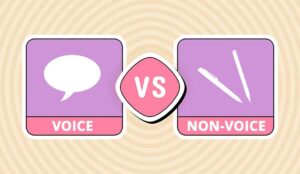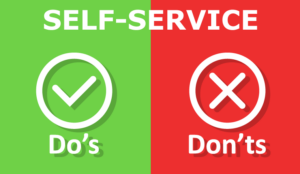Ask any customers about automated voice services and you tend to get a chorus of universal scorn about pressing 1 if you don’t want service and getting stuck in an infinite loop without the ability to talk to a “real person”.
However, is this knee-jerk reaction a real reflection of how customers are using voice self-service today? New research on ‘the autonomous customer’ reveals a far more complex picture of our attitudes to voice self-service. The research was commissioned by BT and Avaya and carried out by Davies Hickman with customers in both the UK and USA.
We’ve all become used to encountering some kind of menu when we ring a contact centre, so it doesn’t come as either a surprise or nasty shock any more. As savvy customers we understand that this is a way that organisations can keep costs down in tough economic times. 71% of customers surveyed suggested that cost-conscious companies should look at using automated services in preference to moving call centres overseas.
When automated services get us to our goal quickly and easily – whether we are paying the gas bill, finding out when the next train to Bognor is or when our bins are next due for collection – we often don’t even remember using them. The survey discovered that 77% of people found automated voice services quick and efficient. 25% said that they actually liked using them because they thought it was faster than sitting listening to a distorted version of Vivaldi’s Four Seasons whilst waiting to get through to a call centre.
However, age seemed to have a significant bearing on this perception of speed and efficiency. 82% of younger customers (aged 16-24) said that they felt automated voice services were quick and efficient, compared to 66% of over 55s. This could well be because younger customers are simply more comfortable and familiar with these services. However, it could also be that older customers are haunted by the ghosts of bad automated service experiences past.
One key piece of insight from the autonomous customer research was that, although 46% thought loyalty was a thing of the past, 83% of customers will continue to do business with an organisation if they make it easy for them. Badly designed automation can make things far from easy. Unfortunately, the evolution of our brains has not run in parallel with the evolution of the microchip. Our average short-term memory capacity remains around 5 to 9 bits of information – which means that we often get lost after only 3 options (press ‘1’ being 1 bit of information and ‘what it is for’ being the second). Well-designed automated services are easy, short, defined in simple customer-oriented terms (rather than corporate speak) and provide customers with reassurance when their transactions have been successful.
Of course, not everything can or should be automated. Customers do sometimes just want to talk to an informed person who can give them advice or sort out their problems. The research found that the most popular automated applications for voice self-service were simple transactional things such as store opening hours/locations, checking account balances and finding out delivery times. Using automated outbound calling to keep customers informed and provide service updates was also rated positively – especially tasks such as electricity/gas reconnection advice, appointment reminders and confirmation of delivery times.
However, the era of endlessly pressing buttons may well be over with more-advanced voice self-service and increasingly reliable voice recognisers allowing us simply to talk to technology. These services currently seem to be more common in the USA than the UK – with 43% of US and 30% of UK consumers saying that they had encountered them. Freed from the constraints of endless menu systems, customers felt that this technology would lend itself to applications such as customer satisfaction surveys, transport timetable and fare information and directory enquiries.

Nicola Millard
However, if automation is simply being used as a strategy for reducing calls, the research also offers one key message to bear in mind. Customers are very willing to serve themselves as they often feel that it puts them more in control. However, when they do want to talk to an organisations, 56% of customers say that it is usually about more complex and emotive issues. This can result in longer and thornier contacts coming into the call centre and can challenge the way in which they are staffed, measured and managed.
Dr Nicola Millard is Customer Experience Futurologist at BT
Author: Jo Robinson
Published On: 11th May 2011 - Last modified: 25th Apr 2024
Read more about - Guest Blogs, Nicola Millard




































It all makes sense but as you say it is never cut and dried.
My experience with BT is so woeful that I do not call them anymore. I never get a result. So BT don’t know that I am not calling them and they don’t know that I am extremely frustrated. they also don’t know that I am struggling to find anybody to talk to about the problem.
A combination of factors feed into the level of customer acceptance of an IVR / Speech Recognition application and one of the most important is the application design. If it is appropriate to automate the process and the design enables customers to do what they want easily and efficiently then, overall, it will be a success.
We recently designed, developed and delivered speech driven ID&V and Payments applications for an Enterprise client of ours and they are experiencing transaction completion rates which are much improved compared to previous applications they were using. 84% of ‘novice’ users now complete the ID&V process without need to speak to an agent and the figure is 90% for frequent users. Of the customers who complete ID&V and then choose to use the automated payments application 79% successfully make the payment using only the automated process.
The client is of course happy with this level of success and a general conclusion can be drawn that customers are happy to use them.
Regards,
Darren Mills